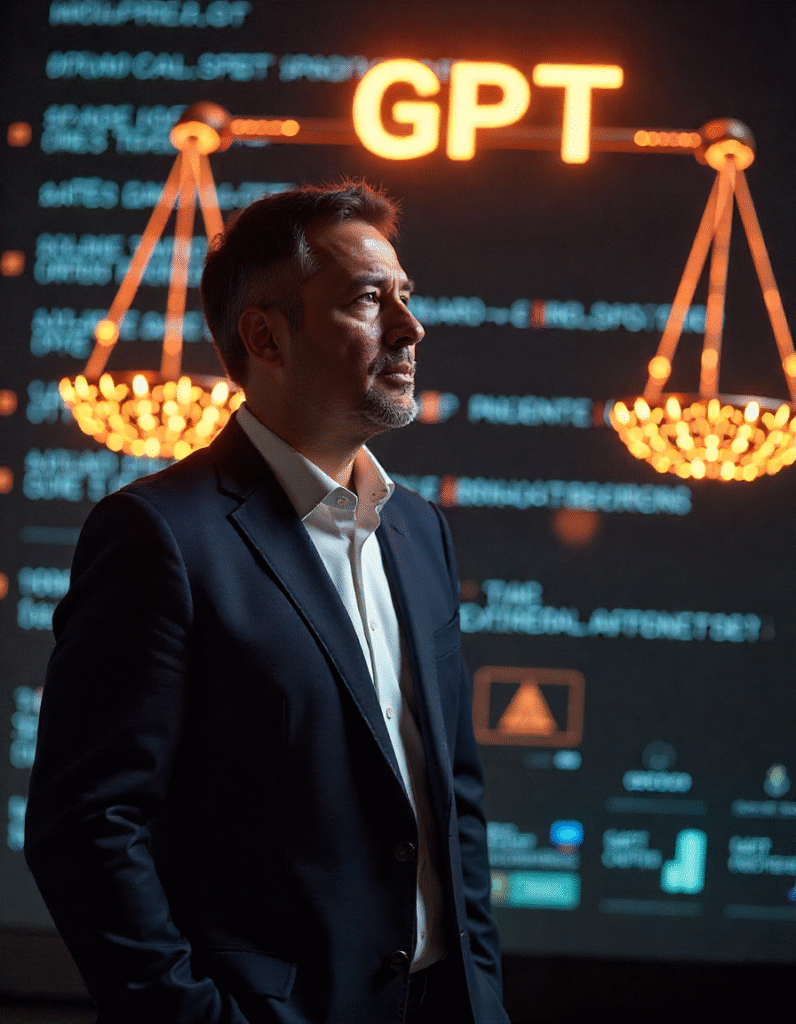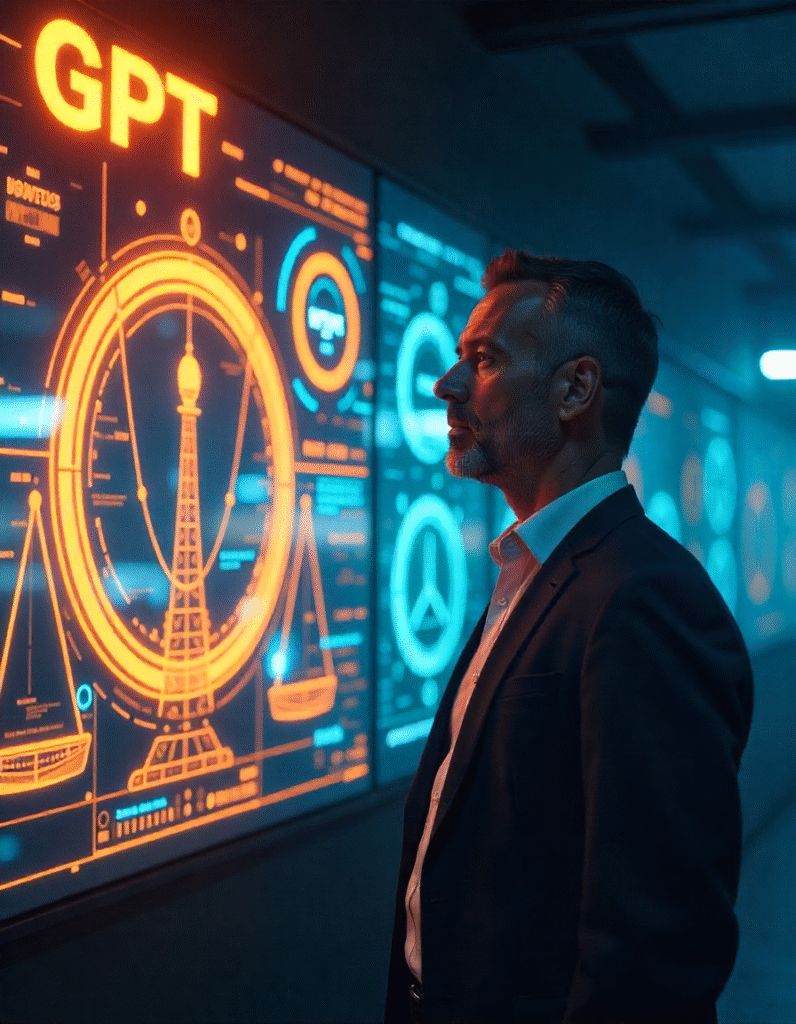OpenAI CEO Sam Altman voices unease over GPT‑5’s speed, risk, and oversight—likening it to the Manhattan Project. What it means for AI’s future.
Introduction
Imagine building a breakthrough so powerful that even its creator pauses and asks, “What have we done?” That’s what’s happening inside OpenAI. As CEO Sam Altman prepares to unleash GPT‑5, he’s voiced genuine worry—comparing the model to the Manhattan Project. In that moment, he admits to feeling “useless” in the face of artificial intelligence that may soon outthink even its architects. Let’s unpack what’s driving his concern, why it matters, and how it shapes the path forward.

GPT-5: What’s at Stake?
Why is openAI cautious?
At its core, GPT‑5 represents not just more power, but more potential for misuse. The CEO has repeatedly raised two big categories of concern:
- Safety and misinformation
• More fluent, believable content raises the risk of deepfakes and misinformation. Studies from organizations like RAND suggest that over 50% of online adults are already exposed to AI-generated falsehoods daily.1
• A more advanced model like GPT‑5 could deepfake complex communications convincingly, from political ads to crisis misinformation. - Economic and labor impacts
• A Brookings Institution report estimates that up to 36% of U.S. jobs are at high risk of automation.2
• GPT‑5 could automate not just basic tasks, but higher-level writing, analysis, even design—raising workforce disruption concerns.
Expert Insight: Voices Behind the Warnings
From the CEO’s Desk
The OpenAI CEO has emphasized a principle that actually feels deeply humane: “If we can’t prove its safety, we shouldn’t release it.” This echoes the stance of AI leaders worried that rushing could lead to harm—especially in vulnerable communities or during election cycles.
Academic Perspectives
Dr. Maria Thompson, AI ethics professor at MIT, notes, “Each generation of AI has improved fluency, but that also means improved capability to deceive or manipulate. Without robust detection and governance, we’re sailing uncharted waters.”3
On the economic front, labor economist Dr. Samuel Greene from Brookings adds, “Disruption isn’t inherently negative—but when innovation outpaces social adaptation, the dislocation hits hardest at low-income and retraining-challenged workers.”4

The Balancing Act: Innovation vs. Responsibility
Iterative Safe Development
- Testing and red-teaming: Internal teams simulate worst-case scenarios—deepfake scripts, explosive content prompts—to identify model weaknesses before release.
- Phased deployment: Small-scale rollouts for trusted partners and researchers, using feedback loops to fine-tune controls. This mirrors pharmaceutical approaches to drug trials.
Transparency and Oversight
- Model cards & audits: Detailed documentation of GPT‑5’s capabilities, known failure modes, and proper usage guidelines. Transparency builds trust.
- Third‑party audits: Independent reviewers analyze bias, factual errors, and security concerns in model outputs.
By the Numbers: Risks and Readiness
| Metric | Statistic / Estimate |
|---|---|
| Misinformation Reach | ~50% of U.S. adults exposed daily to online false claims¹ |
| Jobs at High Automation Risk | ~36% in the U.S. vulnerable to displacement² |
| Accuracy Improvement (GPT trend) | 15–30% per iteration, based on research benchmarks |
| Detection Tools Maturity | ~60–70% detection accuracy for AI text currently |
¹ RAND, 2024 report on misinformation exposure
² Brookings Institution, 2023 automation risk data
Real-World Examples
- Election season risks: A more capable GPT‑5 could create authentic-sounding fake speeches attributed to political figures, potentially swaying public sentiment.
- Academic cheating: Already, GPT-powered tools assist students in drafting essays. With GPT‑5, students might generate entire thesis chapters, prompting questions about academic integrity.
- Journalism erosion: Newspapers and blogs could be flooded with plausible—but inaccurate—portrayals of breaking news.
Subheading: Social Impacts and Ethical Threads
- Bias and Representation
GPT‑5 may perpetuate biases it has learned from training data—gender, racial, or ideological. The CEO has flagged the need for demographic audits and content filters attuned to underrepresented communities. - Accessibility vs. Abuse
While GPT‑5 can make knowledge generation vastly more accessible—for entrepreneurs, students, writers—the same ease can become a vector for spam, scams, or psychological manipulation.
What Comes Next: Governance, Regulation, and Public Voice
Industry Pressure and Regulation
The CEO has called for “proactive policy,” urging lawmakers to craft rules around AI disclosure, misuse penalties, and transparency. According to Pew Research, 70% of Americans support government oversight of AI technologies.
Public Awareness
Beyond formal governance, the CEO advocates awareness campaigns: “If citizens recognize AI-generated content, we disarm its deceptive power.” Digital literacy, in short, is part of the cure.
Gloss over Technical Jargon: What Does This Mean For You?
- Expect stronger labels—for instance, “Content generated by advanced AI.”
- Social media platforms may add AI‑source warnings or refuse posts flagged as suspect.
- Educational institutions may adopt more robust plagiarism tools, tailored for AI detection.
Engaging Q&A: Frequently Asked
Q1: Is GPT‑5 already released?
No—it’s still under development. The CEO has signaled caution, stating it won’t be launched until safety benchmarks are met.
Q2: How will we know if something is AI-generated?
Expect watermarks, metadata tags, and third-party tools to detect AI artifacts. But literacy is key—if it reads too smooth, verify the source.
Q3: Will GPT‑5 take my job?
Not necessarily—but it may change your tasks. Those requiring creative oversight, human empathy, or strategic judgment can’t be fully automated.
Q4: Can GPT‑5 be used for good?
Absolutely. Think: helping writers overcome writer’s block, aiding disabled users in expressing ideas, or summarizing research for everyday readers.
Q5: What’s the next milestone?
Safety certification—independent labs, red-teaming results, bias audits—all must align before release.
Conclusion
In a world where tech often races ahead faster than society can adapt, the OpenAI CEO’s measured stance on GPT‑5 feels refreshingly human. It’s not fear—it’s responsibility. Not panic—it’s preparedness. As GPT‑5 inches closer to reality, it’s a collective moment to pause and ask: can we launch without consequences? Because if innovation isn’t bound by ethics, it won’t just zip ahead—it might crash. Let’s hope the brakes hold strong.